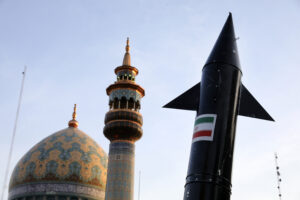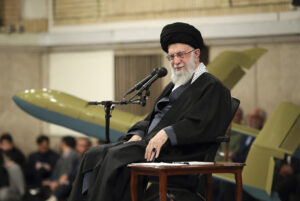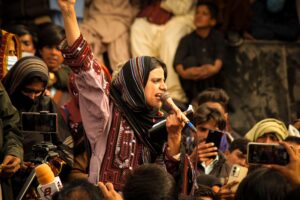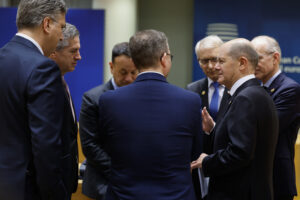U.S. Calls on Iran to Unblock Social Media Sites
The Trump administration stepped up its support for protesters, encouraging Iranians to use special software to circumvent controls.WASHINGTON—The Trump administration stepped up its support for protesters in Iran on Tuesday, calling on the government to stop blocking Instagram and other social media sites while encouraging Iranians to use special software to circumvent controls.
Following several days of tweets by President Donald Trump rooting on the protesters and declaring that it’s “time for change,” the State Department took it further, arguing that the United States has an “obligation not to stand by.” Undersecretary of State Steve Goldstein, in charge of public diplomacy, said the U.S. wants Iran’s government to “open these sites” including the photo-sharing platform Instagram and the messaging app Telegram.
“They are legitimate avenues for communication,” Goldstein said. “People in Iran should be able to access those sites.”
Iranians seeking to evade the blocks can use virtual private networks, Goldstein said. Known as VPNs, the services create encrypted data “tunnels” between computers and are used in many countries to access overseas websites blocked by the local government.
Despite the blocks, the United States is working to maintain communication with Iranians in the Farsi language, including through official accounts on Facebook, Twitter and other platforms. The State Department also was to distribute videos of top U.S. officials encouraging the protesters through those and other sites.
The U.S. outreach came as the Trump administration, in a departure from President Barack Obama’s approach, was mounting a full-throated show of support for Iranians protesting against the government over concerns about corruption, mismanagement and economic woes.
The administration was also considering additional sanctions against Iran over human rights concerns related to the protests, said a U.S. official, who wasn’t authorized to discuss the plans publicly and demanded anonymity. And at the United Nations, U.S. Ambassador Nikki Haley said she was calling for the Security Council to meet urgently to discuss the protests.
Iran’s government has blamed the U.S., Saudi Arabia and the United Kingdom for fomenting the protests, calling them the work of foreign “enemies of Iran.” It’s a similar response to the ones Tehran has used in the past to discredit uprisings, including the Green Movement demonstrations in 2009.
Goldstein said the U.S. was not only supporting the protesters but encouraging other countries to do the same. The State Department was also dispatching Arabic speakers to appear on Arabic-language television networks to discuss the protests in Iran.
“We want to encourage the protesters to continue to fight for what’s right and to open up Iran,” Goldstein said.
The demonstrations over six days have been largest in Iran since the country’s disputed 2009 presidential election. They started Dec. 28 in Mashhad, Iran’s second-largest city, as demonstrators decried the country’s weak economy and a surge in food prices. The protests have expanded to several cities. At least 21 people have died, and hundreds have been arrested.
Trump has voiced support for the protesters on Twitter, praising Iranians on Tuesday for “finally acting against the brutal and corrupt Iranian regime.” He has said the United States will be closely monitoring any human rights violations by the government.
“The U.S. is watching!” the president tweeted.
___
Reach Josh Lederman on Twitter at http://twitter.com/joshledermanAP
Your support matters…Independent journalism is under threat and overshadowed by heavily funded mainstream media.
You can help level the playing field. Become a member.
Your tax-deductible contribution keeps us digging beneath the headlines to give you thought-provoking, investigative reporting and analysis that unearths what's really happening- without compromise.
Give today to support our courageous, independent journalists.









You need to be a supporter to comment.
There are currently no responses to this article.
Be the first to respond.